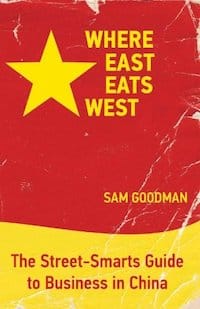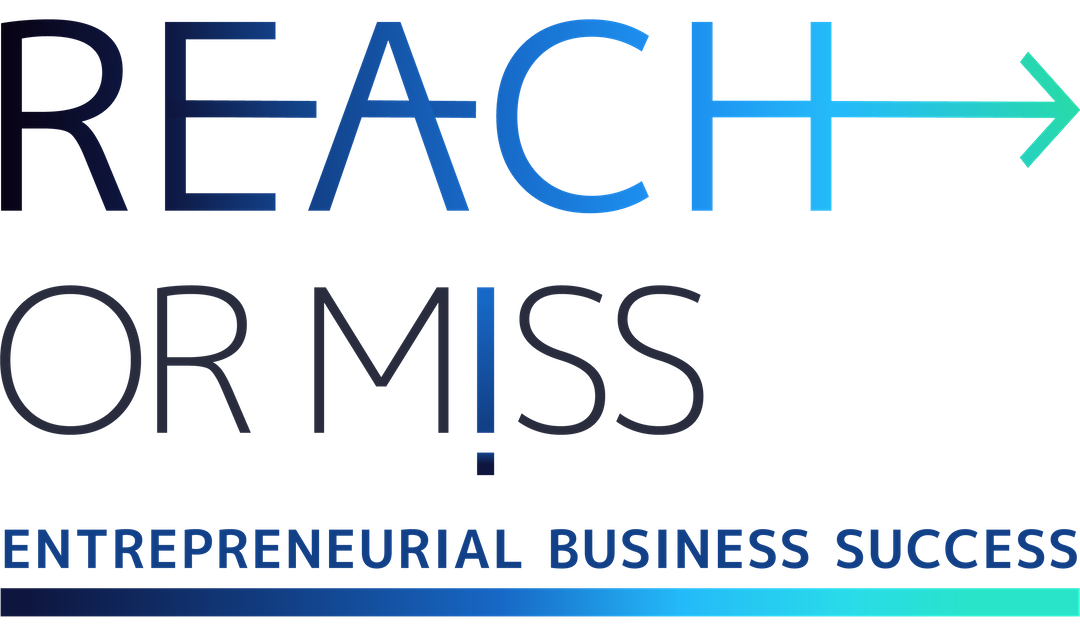Ep. 010 – Winning the Chinese customer – Nevo Alva, CEO and co-founder of Visualead, shares their customer’s approach, working together with its strategic partner investor Alibaba

Nevo Alva Show Notes
Nevo Alva is the CEO and co-founder of Visualead, pioneer of embedded visual QR code technology that seamlessly converts part of any image into a QR code, enhancing consumer engagement. Alva drew on his considerable entrepreneurship experience and education to successfully develop and launch Visualead in less than one year.
Visualead has a very strong awareness and presence in Asia, particularly in china. The company has a strategic partnership with its main investor the Alibaba Group, the owner of China’s largest e-commerce businesses.
Most passionate about today
- Visualead started 6 years ago; it deals in the connection between offline and Online. I’m most passionate looking at the future of offline to online as I see it, definitely the field of augmented reality and everything related to content of augmented reality.
- Today we work mainly in china, we have a strategic partner investor which is Alibaba, and in the last four years we worked in china so most of our business, most of our customers are in china and around china. In the near future we are going to see our first launch to other territories such as Taiwan. we are already working in, Thailand, India and Japan. We are Asian focused company.
- One of the most unique and important thing about us is that we keep innovate all the time and our services are on the front line of technology, this has always been our competitive advantage.
Your company
- We were a group of passionate very young entrepreneurs that recognized a gap in the market of connecting offline and online. Back in 2010, mobile was on the rise and the physical world is here to stay and we decided to use our technical talents and abilities to bridge this gap.
- We started from scanning images and got the first slap with the understanding that we can’t just invent a new app and expect everybody to know about it and download it. This was the first lesson that we have learned; as a small company we have to have a very good “Go to Market” plan, and we have to have a very good understanding of our customers.
- So in order to overcome the challenges I mentioned we decided instead of scanning images to take an existing standard of QR code and implement it inside marketing materials, and by that we overcome the need to educate the market because there were about one billion people that already had an app that can scan QR codes. We called our product Visual QR code competitive with regular QR codes.
- Once we came with this product we got the seed investment which enabled us to launch the product.
Your customers
- First of all we had to choose whether to go to the small businesses in order to make every small business a user, or to build a premium product for the big brands. Because of our experience and the DNA of our company we have chosen to focus on the small businesses, and we believed we can reach a very large amount of small businesses and give them good product. We went through a market strategy process that included research and understood the value we can bring to our customers, we built a “Do It Yourself” online platform that allowed any small business to create its offline to online campaign. This is how we started, not related in any way to china.
- After one year we managed to have a very impressive platform with nice monthly revenues. And then we looked to grow from one hundred thousand businesses to one million. We made another research and we saw that when you talk about QR codes, offline to online and consumer behavior (of using their phone to many other uses rather than call each other), Asia and specifically China has a very big potential. That was in 2013.
- Here I have a nice story because we didn’t have a lot of budget, we couldn’t afford to go to big conferences and have a big booth so we signed up for a startup competition. This was my first visit to china. We went to the competition, we got a free booth and we won the competition! Winning this competition brought us the attention of big enterprises, big companies in China that wanted to do partnerships and use our technology, and this really opened my eyes to this market and in one day I understood I found my market.
- I moved to China with my family six month after this competition. We built a whole strategy of how to penetrate in to china and how it should be done. We had to decide how we conquer China, It was a whole different story then what we did in the west; I came to China without even knowing the language not to mention the culture.
- We started everything from scratch in Chine, and managed to create a very good awareness. For six months there were zero revenues only awareness, many conferences, a lot of buzz around us and partnership campaigns with very big brands like Coca Cola, Yves Saint Laurent, crocs and local brands.
- We have made partnerships with the social networks in china that wanted to use our technology in different ways than I ever imagine. For example with RainMan one of the biggest social network back then, we used a feature in the mobile app that called Scan to Connect – that is your personal digital ID. They took our technology which by then were able to include internet codes inside videos and animation, and they created a set of hundred animations and let the users personalized their personal QR code or visual animation code. So in one month one hundred million consumers saw our logo which was at the bottom of their page and this was my goal. I didn’t see one dollar from this partnership I knew they didn’t want to pay, this is something I learned very quickly about China they want to test for free and keep this test as long as possible. So I kind of used it to build our brand. This kind of things created a lot of awareness, a lot of buzz around our brand in China which really helped us to get an investment eventually from Alibaba at the end of that year.
- Today after joining forces with Alibaba naturally a lot of our products are related to e-Commerce. Alibaba very quickly became not only our partner and investor but also our biggest customer which was the channel that we used to reach the small merchants.
- After that we realized we should switch from small businesses to the big enterprises. Today we work with the big brands providing campaigns mainly for smart packaging, this is where we found that we can bring the highest value, and here we can reach the mass consumers, with one brand we can reach 300 million consumers.
Nevo’s best advice about approaching the customer
- I’ll divide my answer to two short parts: The first part is about the early stage, the big mistake that I see young entrepreneurs do is that they assume a lot of things; they don’t really approach the customers. Or they know two customers and they say: “OK it’s enough now I know my customer”. So the biggest advice I can give is don’t assume anything. You don’t know anything unless you come from this field, but if you don’t and usually they don’t, you must talk with the customers and understand if what you have, have a real value for them or is it a “nice to have”, something that you think is a must but it’s not really the case.
- For the more mature stage I would say if you manage to, make your customers come to you, and then you are in a good position. How to make your customers come to you? One month ago we had a lecture in the Israeli International Machine Vision Conference; we were on stage as speakers next to Microsoft, Nvidia and Intel. This is maybe the best approach I could have for customers. After this conference I didn’t have to do anything, the customers came to me and asked if I can help. I think this is the best positioning entrepreneur should be in. but It’s hard to get to.
Biggest failure with customers
- I have many mistakes… I think the biggest failure that I had done was when I insisted about my value and didn’t listen to my customers. At the initial stage my customers were the Marketing Agencies. I tried to bring them the same value that I brought to the small businesses. I had a few excellent meetings, and some first pilots and even a few “first campaign” but then the customers told me: “You don’t enough value!!” I wasted almost a year and I replaced my sales team because I thought it’s their fault. But it was my fault, I thought the product had a certain value that didn’t exist the way I saw it. Today I’m selling to the brand. The marketing agencies are part of the game but not the target audience.
Biggest success due to the right customer approach
- I think my biggest success was when I put the marketing agencies aside and understood that I should change my solution, I changed my product and that was the point when I entered the smart packaging “vertical” and I went to my customers the big brands and actually listened to them. I had this period when I went to the brand listen to their needs, understood the pain, understood what value can we bring which is “Zero to One”, not “nice to have”. And I think the results speak for themselves. For example one of the brands we work with today is Uni-Presiden the biggest food manufacturer in Taiwan. One of the biggest in Asia. They did a campaign with us to put unique codes on drinking bottles. The amount was huge, One Million Bottles and we helped them from the minute they started to use our technology, in one campaign they got from around 10 thousands to 11 Million new followers in the WeChat account (like Facebook or Twitter account), and this is really “Zero to One” as I see it. I think this is the biggest success.
Recommendation of a tool for customer focus, marketing or sales?
- I work in Europe, Japan and China. One thing you have to understand is the business channel as fast as possible. In China it’s “WeChat” this is the way they do business, for Alibaba it is “DingTalk” in Japan it is “Line” and in Europe they use email/sms.
A person or a book who impact Nevo’s “customer focus” success
- In China there are several communities for foreigners which definitely can help do the initial first step. I think I already helped thousands of startups that wanted to go to China and helped connect them to the several service providers.
- There is China accelerator, a very good accelerator which I sit as a mentor there, there is another organization located in Shanghai that opens offices in Hong Kong.
- And also a good book that I recommend to read “Where East Eats West” by Sam godman, a dear friend. I read his book before I met him in China. This is a light, easy to read book, you can read it in one flight (to China…) and it helps understand what to expect.
The one thing you are most fired up about today:
- As I said at the beginning, the trend is around AV and what we have done is a new product Gygo. The idea is that you use your smartphone to scan objects in the real world; it’s good for e-commerce.
Your most important success factor that effected your success the most
- “Be out their”! Meet as many people as possible. I met many people from Alibaba and got a lot of “NO’s” before I managed to meet the right person and I met him thanks to a meeting I almost canceled at the last minute.
Resources Mentioned:
- Visualead
- Visualead’s new product: Gygo
- Chinaccelerator
 “Where East Eats West” by Sam godman
“Where East Eats West” by Sam godman
More resources for Entrepreneurs
- Don’t Miss – Customer Focus Strategy & Execution: Market Analysis for Fundraising
- Hayut Yogev’s Latest post: Is there a chance you are missing your best customers?
- Former interview: With Joe Pulizzi who tells about his book Killing Marketing and explains why we are doing marketing wrong

